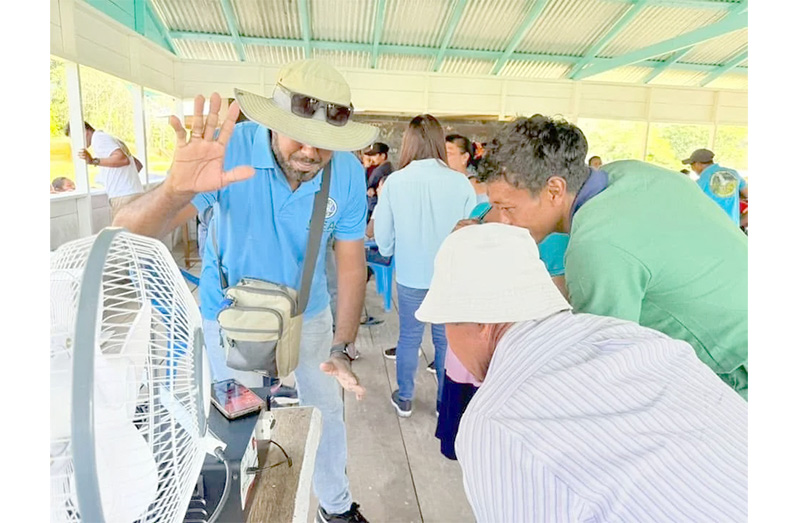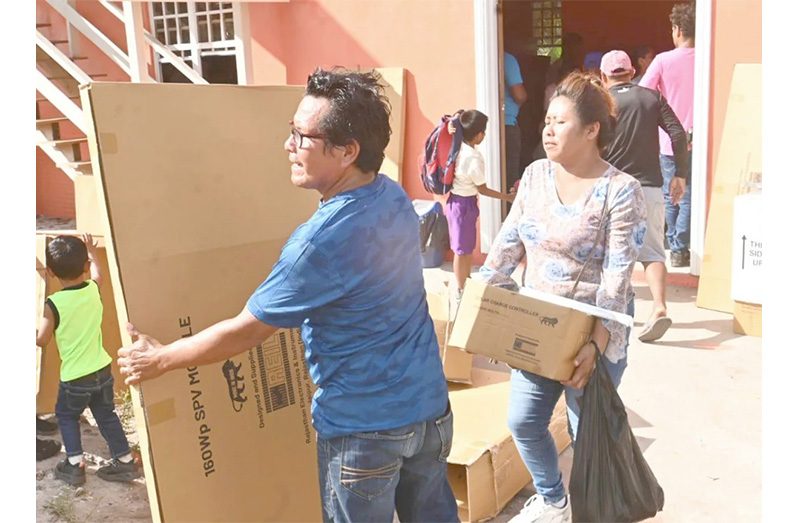FOR as long as she can remember, Swarsattie Singh lived in total darkness due to a lack of access to electricity – a service most would consider a luxury in Guyana’s remote communities.
Singh lives in Susannah’s Rust, a village in the Demerara River off the Soesdyke-Linden Highway with a population of approximately 120 residents.
For about 15 years, life without electricity affected everything she did. She couldn’t easily charge her phone, there were no lights after dark, and there weren’t many ways to keep kids occupied after school.
“Usually we [have to] traverse the river to come to the school because only the school have solar [energy where we can] charge our phones,” she explained in an interview with the Department of Public Information (DPI).

With the rollout of the government’s 30,000 Solar Photovoltaic (PV) Home Energy Systems (SHE) project in communities like Susannah’s Rust, households are now enjoying clean, renewable energy for the very first time.
“It’s going to impact us greatly, especially at night,” Singh expressed after she collected her photovoltaic (PV) system at a distribution exercise earlier this year.
She was among hundreds of residents to receive two 9-watt LED lamps and a 12-watt stand-alone fan. The system also comes with a USB port for charging portable electronic devices, including mobile devices.
Singh acknowledged the strides being made by the government to improve livelihoods, stating that, “Ever since the president visited us, he has fulfilled all of his promises, and I am very excited for the future.”
Similar sentiments were expressed by Ramlochan Narine, a resident of Low Wood, another community situated on the Demerara River. He shared his appreciation, stating, “since I born and grow in this river, we used to use lanterns and flambo [and now] I am grateful for the solar we get now.”
In Region One, specifically Para, the solar systems mean that children in the community are now able to study in comfort at night.
Senior Councillor of Para, Kester Fredericks, shared that the village will no longer be required to buy fuel for generators.
Sheila Francis, a resident of Karaburi, told DPI that her daughter-in-law, a teacher by profession, can now prepare her lessons with greater ease because of the photovoltaic systems.
Over in Kuru Kururu, Denise Williams, a mother of two, shared how difficult it was to support her children’s education using lamps and candles to complete school assignments.
She added, “I am so thankful for this solar and it will be of good use for me.”
These stories are not limited to these communities. Thousands of families across all administrative regions, who were not connected to the electricity grid, are enjoying life with a limited supply of electricity for the first time.
Since its rollout of the initiative in 2023, it has impacted 37,230 Guyanese living in the riverine, hinterland and remote parts of Guyana.
It is worth pointing out that it fulfils a commitment made by the People’s Progressive Party/Civic (PPP/C) administration in its 2020-2025 manifesto.
Importantly, it aligns with the vision of achieving equitable energy access, as outlined in Guyana’s Low Carbon Development Strategy (LCDS) 2030 and contributes to the achievement of Sustainable Development Goal (SDG) 7, which aims to ensure the availability of affordable, reliable, and modern energy supply for all. (DPI)



.jpg)








